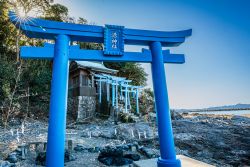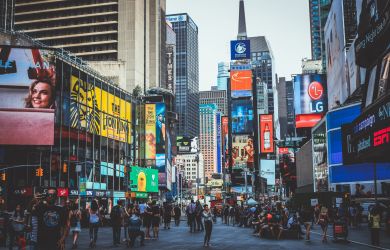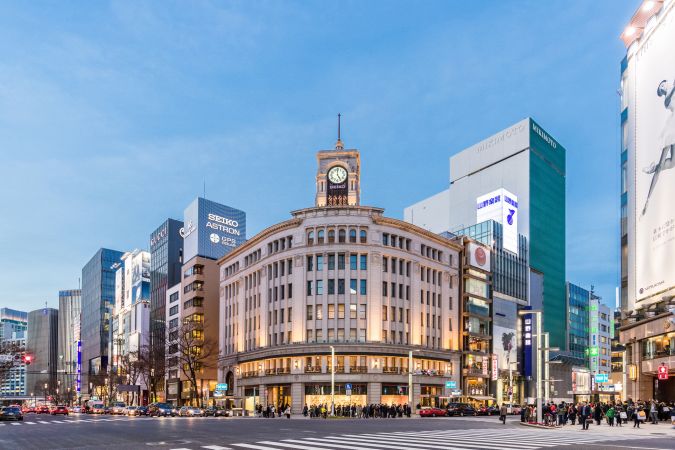
July 25, 2023
Tokyo Neighborhood Guide: Hidden Ginza
Heartlands: A historical tour of Tokyo’s most glamorous neighborhood
Glistening, glitzy, glamorous — Ginza is one of the swankiest parts of Tokyo. A sleek intersection of Japanese style, Western influence and affluent inhabitants have long made it one of the most upscale corners of any city in the world. Ginza holds such high esteem that simply attaching its name to a brand name hints of its stylish influence.
The town’s polished streets overspill with designer label after designer label, luxury cars slowly pull into the carparks of high-end department stores and well-heeled pedestrians sashay along the perfectly preened pavements. But turn away from the rush of the main street and the district’s hidden history reveals itself, tucked away down dark warrens, crouching behind the glossy stores and taking up space inside brick buildings of old Ginza.
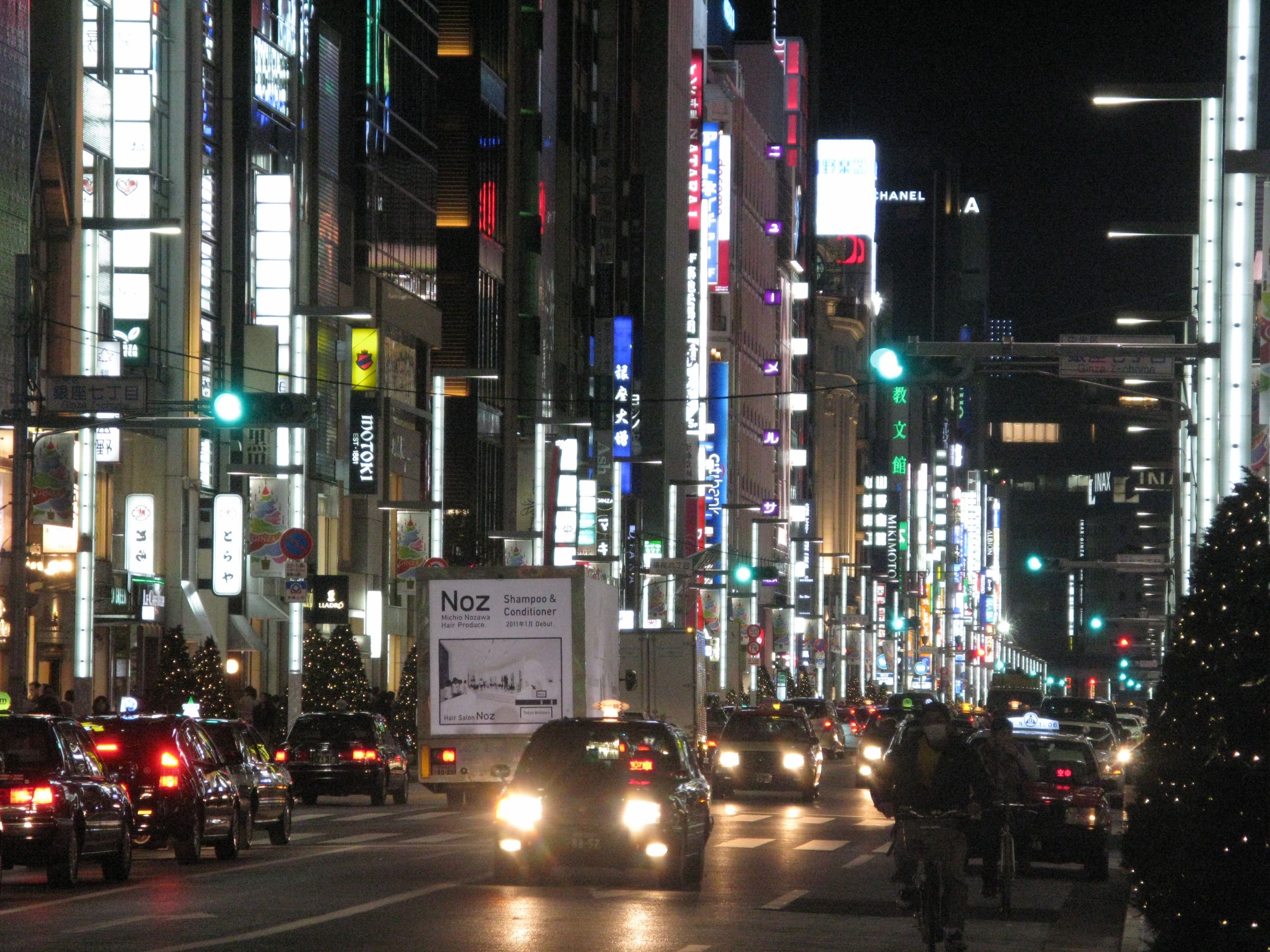
Stepping out in Ginza
The story of Ginza is inherently linked to the fortunes of the capital, but originally, as with much of Tokyo, the land where the district now stands was once a swamp. Reclaimed during the Edo period (1603-1868), it was in 1612, when a silver mint was relocated here by Ieyasu Tokugawa, that Ginza’s fortunes began to change.
The new mint was called Ginza Yakusho (“Silver Mint Authority”), soon simply Ginza. The mint attracted traders of other precious goods and Ginza became a moniker for the area. Mishandling of funds and bribery had long dogged the mint and a decision was made to relocate it entirely to Nihonbashi in 1800 — but the name Ginza remained.
At this point, the town was the mainstay of wealthy urbanites whose property was given to them by the Shogunate. Shops ran along the main street, once part of the Tokaido (a major Edo-to-Kyoto highway). Traders and artisans lived and worked in the neighborhood.

Ginza as we know it today was born in the late-19th century. In 1872 a fire ripped through the mostly wooden buildings of the district. The widespread devastation caused by the blaze prompted the government to step in and stop the construction of more wooden buildings.
They drafted Irish civil engineer Thomas Waters to head up the design of a “model of modernization” for Tokyo, using European city centers as inspiration. Brick buildings were set along wide boulevards edged by brick pavements planted with cherry trees. The budget was big, estimated at nearly four percent of the government’s annual budget.
But this new “Bricktown” didn’t immediately catch on, with high rent making it difficult for business owners to thrive. Even Western visitors disliked it. Iconic traveler Isabella Bird famously noted her distaste for the part of Tokyo, likening it to the outskirts of Chicago or Melbourne — the Tokyo she was looking for was an Orientalist wonderland of Edo long past. Others showed their distaste by comparing it in a negative way to Broadway.
Despite the punishing rent, Ginza thrived. It became a symbol for a new era. Newspapers and publishing houses moved in and elaborate window displays enticed fashionable shoppers with their Western-inspired wares. Ginza’s heyday saw groups of modan (modern) girls and boys — known as moga and moba — parading the pavements to show off risque fashions that broke from the traditional dress.
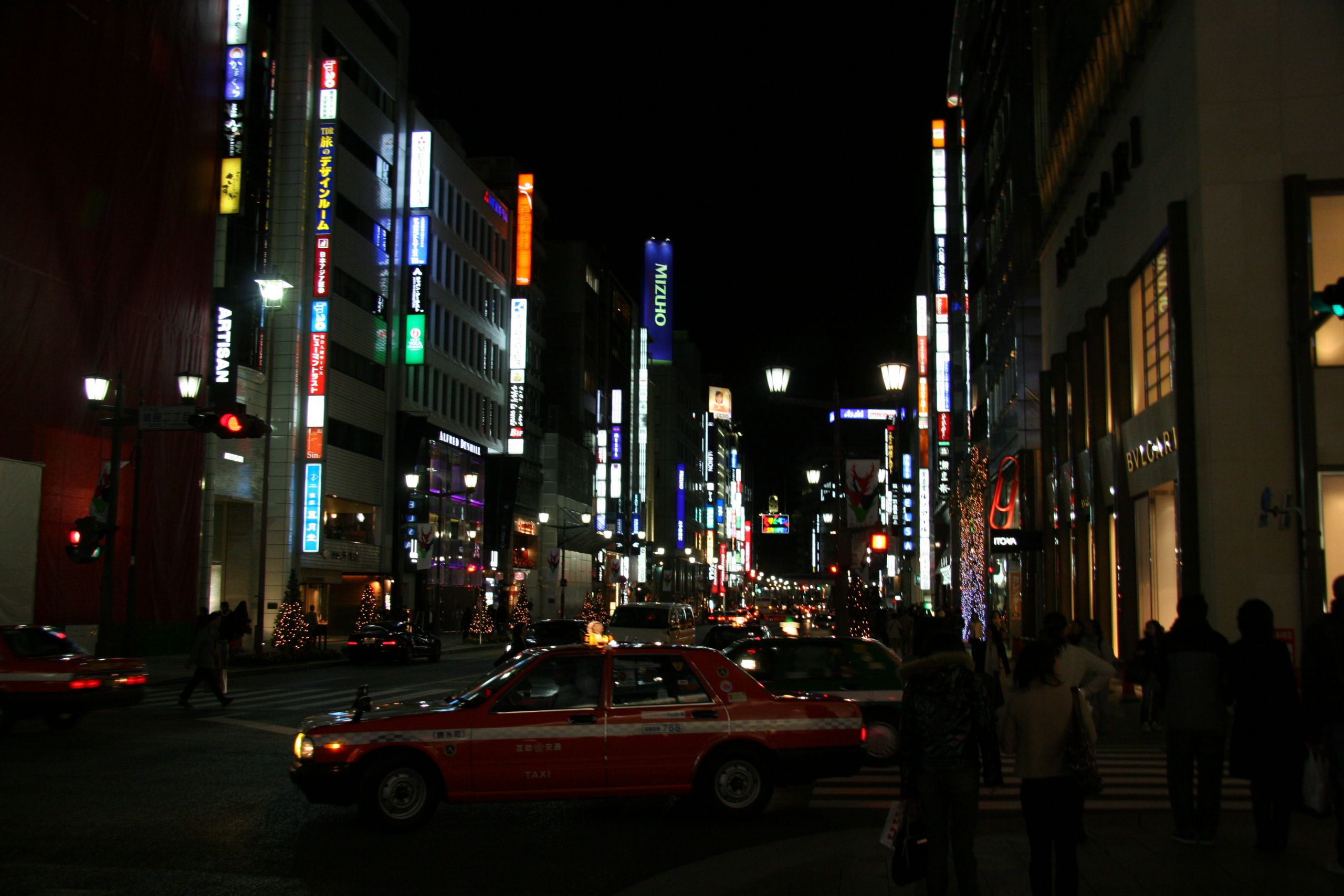
Stylish cafes moved in. The first, Café Printemps, was opened in 1911 by artist Shozo Matsuyama, inspired to recreate a Parisian cafe atmosphere in Tokyo after a sojourn in the French capital. Other coffee shops followed, becoming the haunt of literati and thinkers of the day. It was around this time that the phrase Gin-bura arose, allegedly coined by students; nobody really knows the origin, but it means “an aimless wander in Ginza.”
In 1923 the Great Kanto Earthquake devastated Ginza. The brick buildings did not fare well under the strain of the quake; many toppled. Rebuilding efforts saw widened streets and stylish buildings reconstructed. The first department stores moved in, beginning with Matsuzakaya in 1924, followed by Matsuya and Mitsukoshi. Despite the quake, Ginza retained its image as a classy, open-minded district.
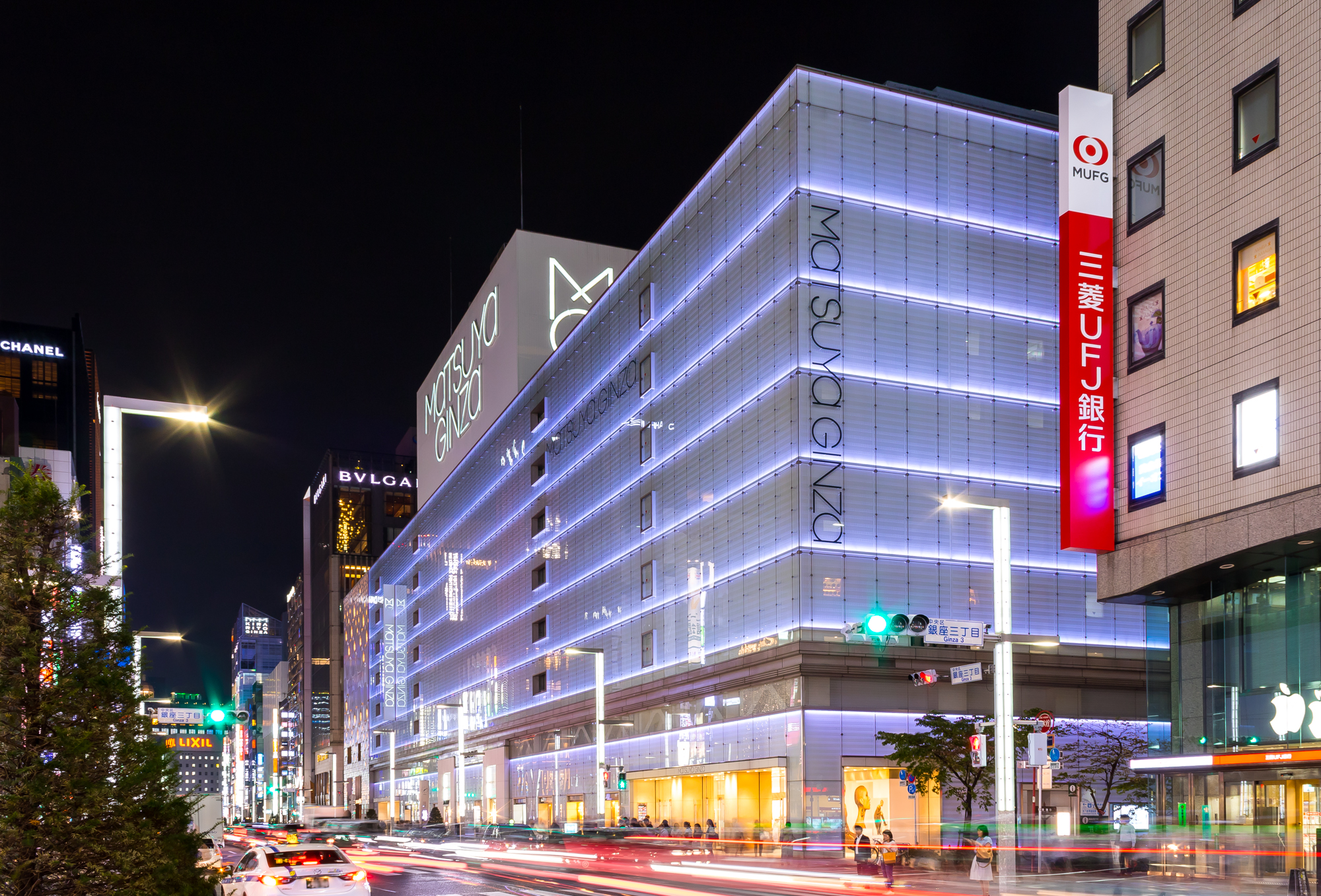
The tradition of Gin-bura was firmly enshrined in the 1970s with the creation of a hokōshatengoku (“pedestrian heaven”), which sees Ginza’s main thoroughfares closed to traffic on weekends and public holidays. It’s ongoing, from midday to 5 p.m. (Oct.-Mar.) or 6 p.m. (Apr.-Sept.).
Today, stylish shoppers, cafe-dwellers, theater-goers and eager day-trippers travel to this most sophisticated district of the capital. But despite the crowds, the modern architecture and earthquake destruction, pockets of the old Ginza remain — hidden, of course.

The Okuno Building
A few minutes’ walk from Ginza-itchome Station, and sandwiched between two modern buildings, the Okuno Building is a bastion of Ginza’s high-end past. The old apartment block retains its original look, inside and out, almost unchanging from its 1932 opening as “Ginza Apartments”. Its current owner, Tsuguo Okuno, is the grandson of the first owner Jisuke Okuno, who made his fortune manufacturing parts for the new railways. After his factory was destroyed in the 1923 earthquake, Okuno built an apartment block in its place to capitalize on the rising real estate value.
Unusually for Tokyo, the building remains as a creative space for artists and designers. The work of renowned architect Ryōichi Kawamoto, the building was the height of 1930s modernity. Constructed from earthquake-resistant reinforced concrete, it boasted the very modern novelty of an elevator — still in use today.
Entering the foyer, visitors are greeted with a colorful collection of post boxes, each for various creative businesses housed in the old apartments. Hop in the old elevator—complete with sliding metal grate—and head up to explore art galleries and boutiques galore. Room 306, however, is a time capsule. Run as a beauty salon for 50 years, and then lived in until 2009, it’s run by the non-profit Room 306 Project. The apartment is open for visitors; a volunteer posted in the apartment will happily talk you through the history and the monochrome photos of yesteryear.
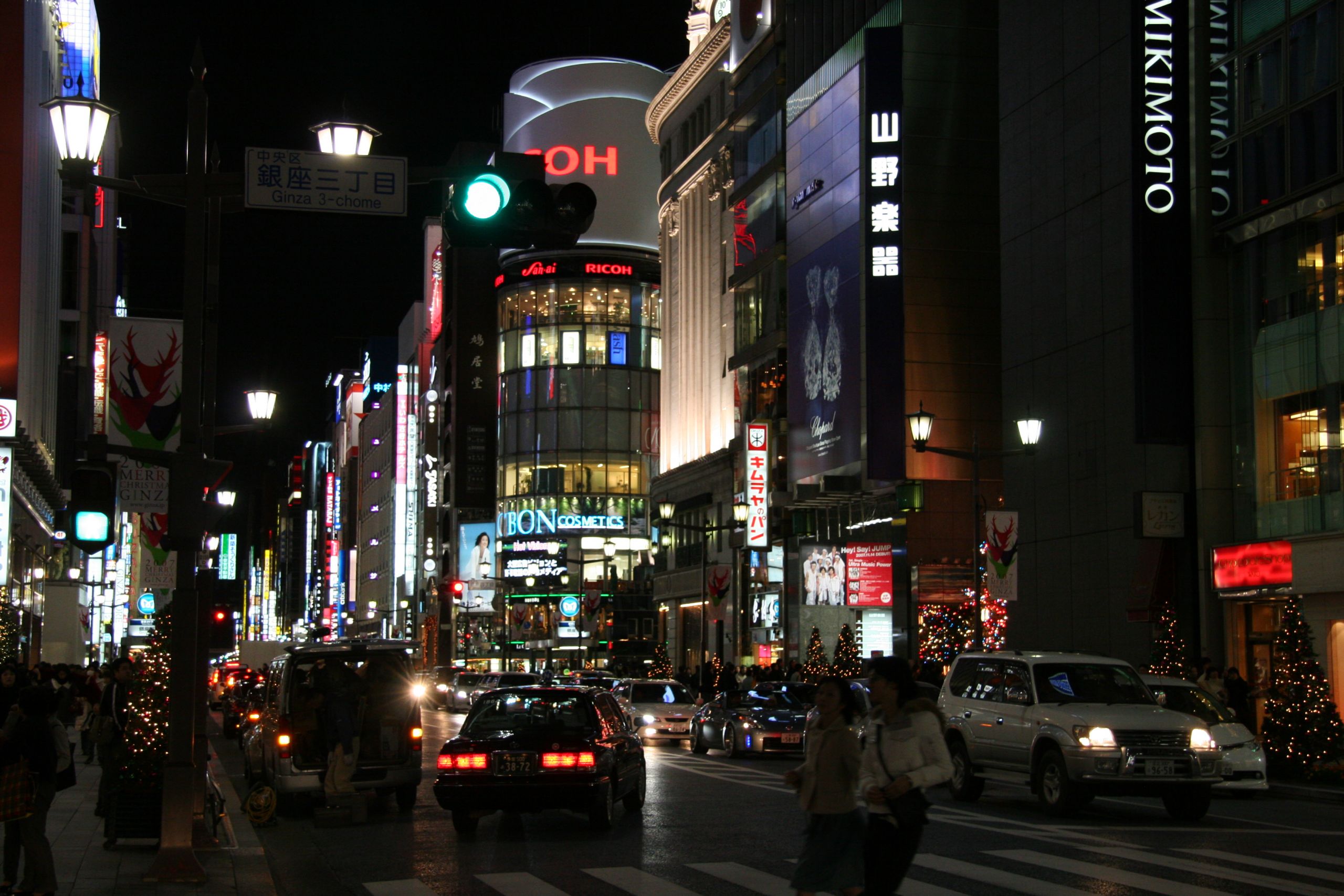
Peering down the backstreets
More secrets await back at street level. Down myriad alleyways, even high atop buildings, Ginza hides a collection of small shrines that have been maintained for centuries. Known as Ginza Haccho Jinja, these 12 sacred spots welcome pilgrims to visit them with a meguri (tour) that weaves around the city streets. Stamps are available to mark the moment.
Passing the crowds and queues of hungry diners, it’s hard to believe that a quiet pocket of peace could exist anywhere. The Hodo Inari Shrine is nestled down a small alleyway, where a monkey statue points the way. After passing through a dark passage, the shrine waits among vending machines and the backdoors of businesses. People pray for children’s health. Down a darker alley still, the Toyoiwa Inari Shrine sits slotted between skyscrapers. It’s easy to miss if you’re not looking out for the stone marker at the entrance; come here to pray for luck in romantic pursuits.
Ginza Shusse Jizoson looks out over the district from the terrace on the ninth floor of Mitsukoshi. The location of the stone Jizo statue is unusual for its kind, who are usually found at intersections at ground-level. Theories of its origins vary, but it’s believed to have been found in the Meiji era (1868-1912) during excavations of the Imperial Palace’s moat, and was eventually placed here 1968. One of the more charming Inari shrines in Ginza, Azuma Inari Shrine is said to have prevented fires since it was established following World War II.
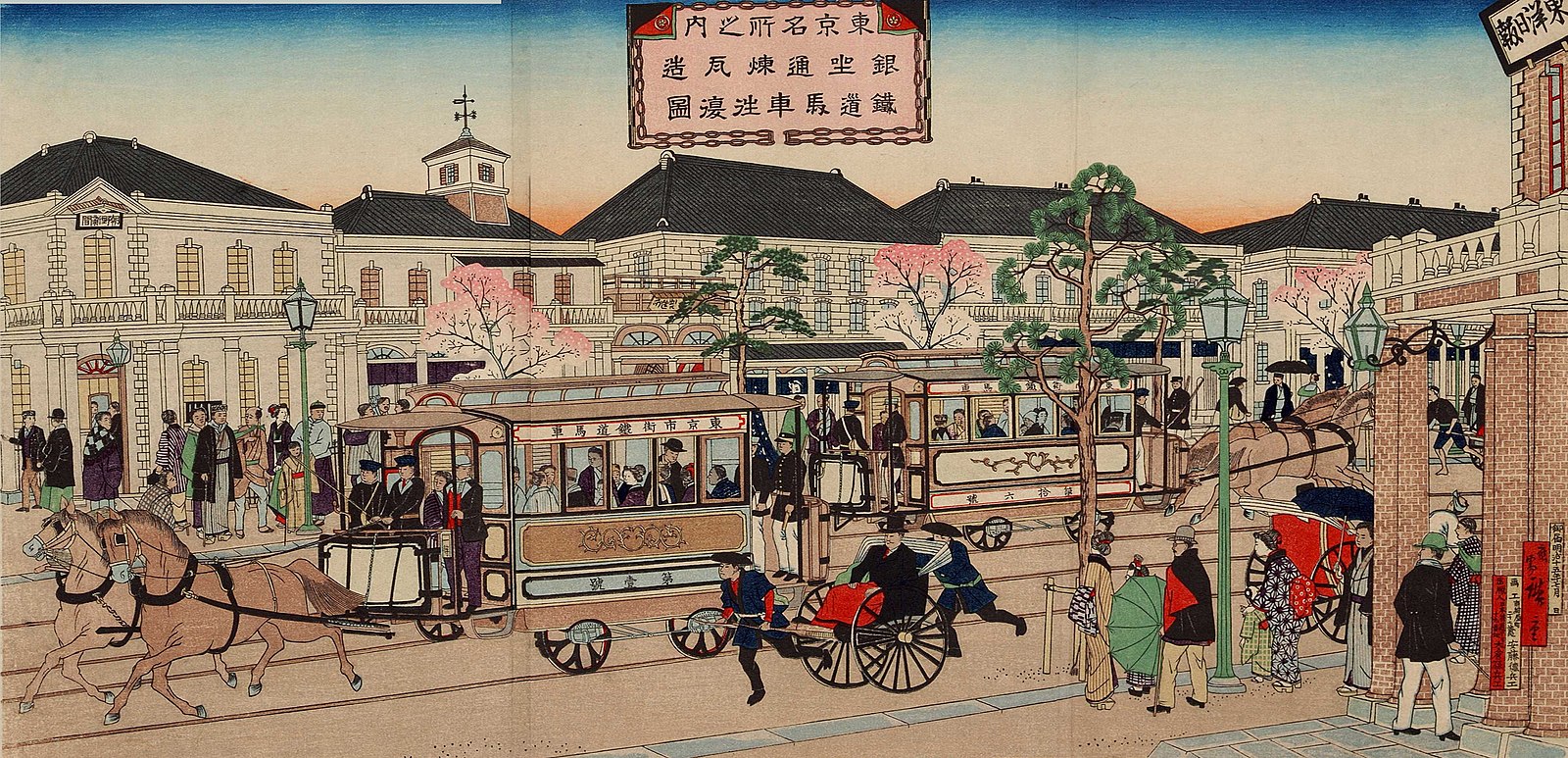
Just along the street from the Kabuki-za is the small Hoju Inari Shrine. Dating to around 1615, it sits on the site of daimyo Itakura Shigemasa’s Edo home and was built for protection of his family and to ward off fire. The shrine was given to the district following the Meiji Restoration of 1868, and is now carefully maintained by the neighborhood. Just outside the Kabuki-za Kabuki Inari Shrine, where people pray for the safety of cast and crew (and for a big audience) during kabuki performances.
Coffee and ketchup
Gen-bura is hungry work, so take some time to find a corner inside a kissaten (traditional cafe) to relax and refuel. Those looking to eat the most deliciously buttery omelet sando or melt-in-the mouth omurice should make their way to Kissa You. Opening in 1970, the two-storey cafe might have one of the longest lines in town (two hours), but wait it out for a meal to remember.
Practically next door (and with less queuing time), there’s Flor de Cafe Ki No Hana. This vintage cafe was visited by John Lennon and Yoko Ono shortly after its establishment in 1979, and has been serving freshly roasted drip coffee in a chilled, charming atmosphere ever since.
In need of something stronger? Hidden down a back alley, Bar Lupin opened in 1928 and has been the haunt of notable creatives throughout the decades including the likes of Osamu Dazai. For a full-on retro dining experience, venerable Renga-Tei’s classic menu of genre-defining classic yoshoku dishes (they claim to have invented omurice and tonkatsu) still draws crowds after 128 years in the business.


